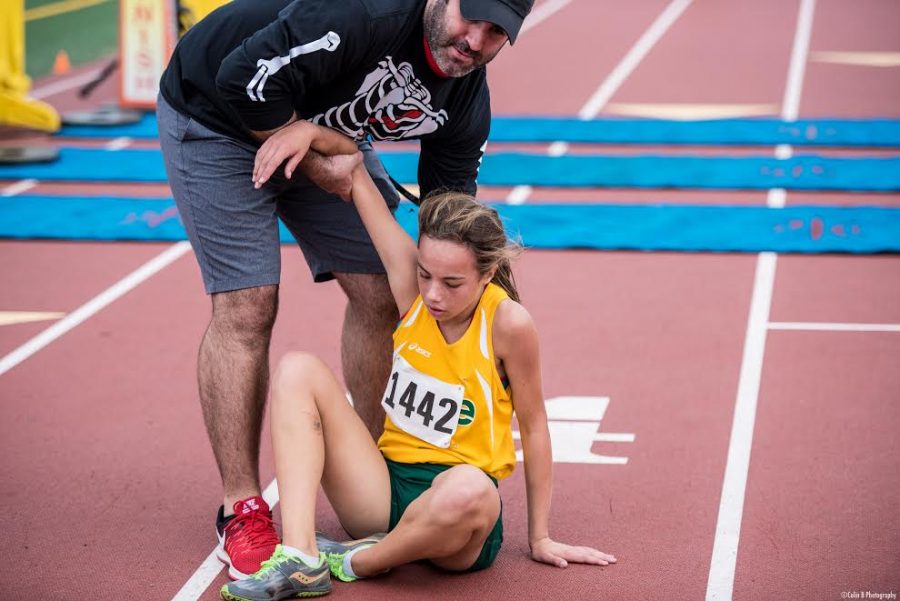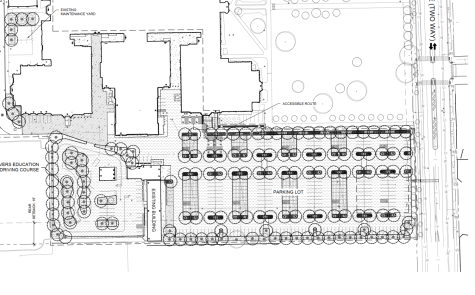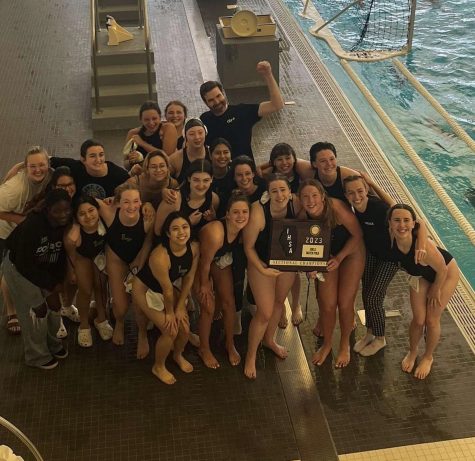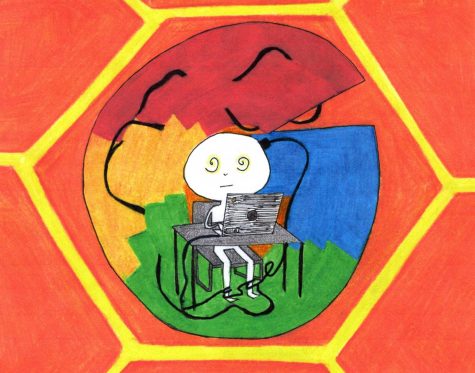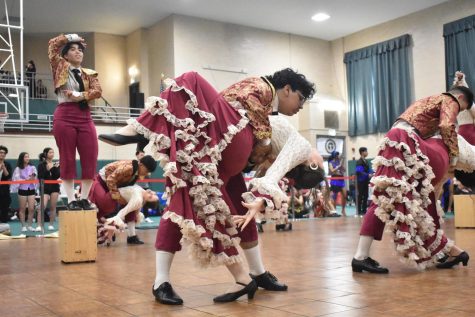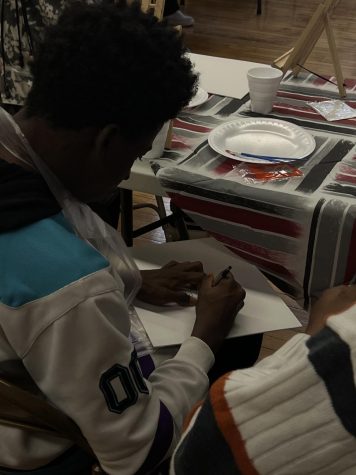Bent, but not broken
Sophomore Girls track runner Madeline King receives help after a race in the spring of 2016. High school athletes account for an estimated 2 million injuries, 500,000 doctor visits and 50,000 hospitalizations each year.
December 21, 2016
Derrick Ovidio saw a defender on the ground, hurdled the defender and next thing he knew, he was falling as his knee buckled and a sharp pain echoed through his leg. Ovidio landed on the ground and he swore his leg was broken. Little did he know that he would later require ACL reconstructive surgery and be out for about six months.
“To miss all that time away from sports and not be able to do certain workouts that other people could, that killed me inside,” said Ovidio, Div. 761. “I wanted to work and play with my team.”
High school athletes account for an estimated 2 million injuries, 500,000 doctor visits and 30,000 hospitalizations each year in the United States, according to the American Orthopaedic Society for Sports Medicine. Additionally, injuries sustained from repetitive use or strain are responsible for nearly half of all sports injuries to middle and high school students.
Because of this, Ovidio takes careful steps to help prevent further injuring his knee.
“I stretch and ice after every practice,” Ovidio said. “I sometimes throw on an icy hot and massage my calves, thighs, etc.”
Another student-athlete, Rania Zarr, Div. 771, who tore her ACL, takes similar steps to prevent overuse injuries.
“To prevent the injury from happening again, I have strengthened my hips and learned to be more careful and thoughtful of every move I make out on the field,” Zarr said.
The fear behind every injury is whether or not it will persist, and this is definitely something that is in the athlete’s minds as they undergo the recovery process.
“During recovery I just kept thinking if I would ever be as good as I was before. And the thought of losing my abilities as an athlete was frightening,” Zarr said. “I am now limited to how hard I can train, and my athletic career will probably end sooner than most due to my deteriorating knee.”
Ovidio, on the other hand, said that the injury had no big impact on him.
“It was pretty much a one time thing. I know now to take care of myself more and not to take my legs for granted. Thankfully it has not been a recurring injury,” Ovidio said.
Along with lower body injuries, upper body and head injuries have been a popular topic of discussion, ranging from the lowest levels of sports, all the way up to the NFL and other professional organizations.
According to a study by the University of Colorado-Denver, injuries associated with participation in sports account for 21 percent of all traumatic brain injuries among children and young people in the United States.
A Traumatic Brain Injury, or TBI, can have symptoms ranging from mild, moderate, or severe, depending on the extent of the damage to the brain. A person with a mild TBI may remain conscious or may experience a loss of consciousness for a few seconds or minutes, while a person with severe TBI could possibly face lifelong and life threatening symptoms.
This has especially hit close to home here at Lane, where in 2013, football player Drew Williams suffered a traumatic brain injury during a game. This incident had an impact not only in the Lane community, but throughout the football community as well spreading all throughout the city of Chicago.
Cheerleader Mary Casey, Div. 755, suffered a concussion in October when one of her flyers landed on her head and she was accidentally kicked in the face as well.
“I was very frustrated because I felt like I was back to normal but due to it being a brain injury, it was a very tedious and aggravating return,” Casey said.
Although Casey’s injury had no repercussions nearly as severe as Drew Williams’, she added that is was emotionally and physically difficult to miss time and experience the recovery process.
“It was hard,” Casey said. “I felt back to normal within days but fluctuating symptoms made it very difficult for the doctors and trainer to even consider putting me in return to play protocol.”
Casey added that the only way to really get cleared of a concussion is to show absolutely no symptoms, but for her it was “extremely difficult” to be cleared of these symptoms while also taking on the challenges of “being a stressed out and sleep-deprived high school student.”
As these athletes have voiced, it is not easy to be injured and watch the game they love go on without them.
“So much frustration!” Zarr added emphatically. “Even during physical therapy I became very restless because my body was not allowing me to do what used to come so easily. The injury really did take a toll on me mentally and emotionally.”
Ovidio voiced similar frustration.
“My trainer would show me a movement and I’d try to mimic the movement exactly, but being that I wasn’t 100 percent, I’d mess up and fail because I wasn’t yet back to full strength,” Ovidio said.
Despite the challenges faced, positivity proved to be key in the face of disappointment.
“Thoughts going through my head were all positive,” Ovidio said. “I figured it was just another obstacle I had to get through and I was determined to finish strong.”
“Some advice I have is to always push through,” Zarr said. “No matter how hard it gets or how much you want to give up it isn’t worth it. The feeling you get when you step out onto that field once you have recovered is like no other. As athletes we know better than to give up. It’s all a mental fight; our bodies are capable of more than we could imagine. Don’t let it break you.”

